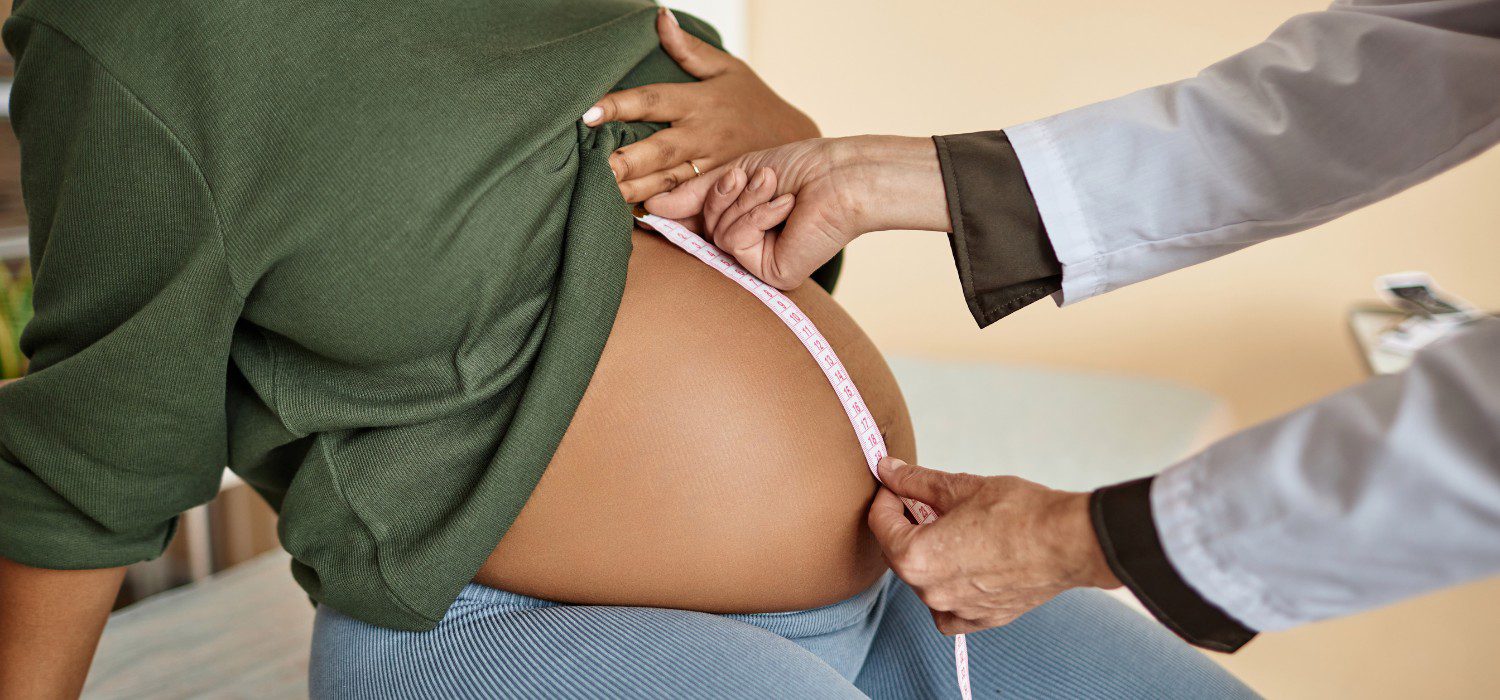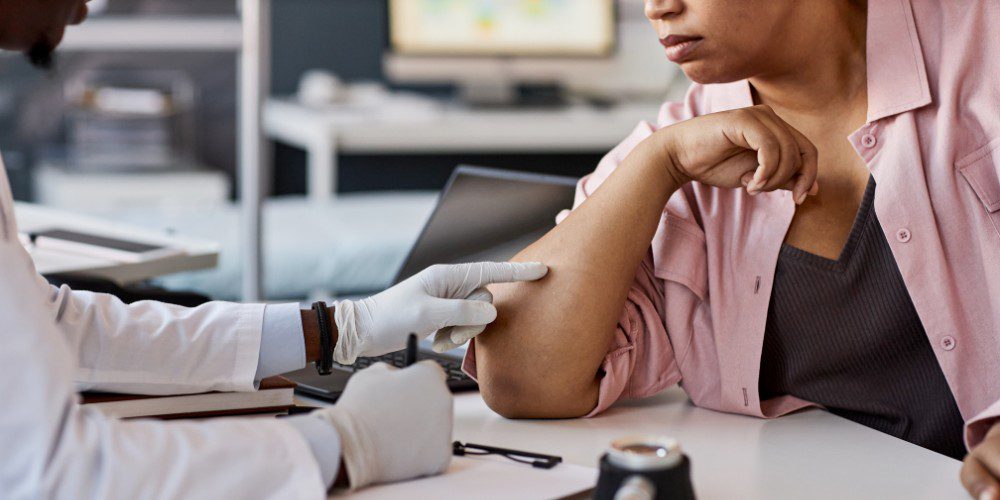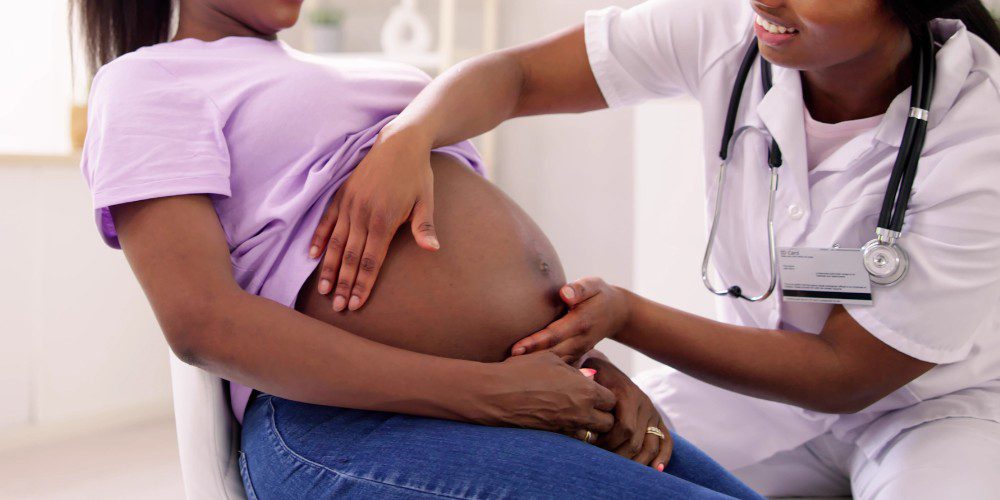
Newborn & Baby
Is it happening to (or around) you? Calling out discrimination in maternity care – the 2025 tool kit
Jessie Day, Senior Editor | 9 Oct 2025
When you show up for fertility or antenatal care, labour or postnatal visits, you expect safety, dignity and respect. But for Black women across the UK, that expectation is repeatedly shattered. The latest evidence makes it unmistakably clear: discrimination in health and social care, particularly in maternity, remains pervasive. And it’s killing trust, harming health, and too often costing lives.
This feature is for Black mums, birthing people, and allied healthcare workers who refuse to gaslight themselves or others. It gives you the up-to-date language, the framework, and a BS-free toolkit: how to know when discrimination is happening (to you or in your field of care), how to call it out, and how to move treatment forward.
Definitions are crucial, so we’ll start there.
What is discrimination in health and social care?
At its core, discrimination is when someone or a group is treated less favourably than others because of who they are. This can include their race, gender, maternity status, disability, religion, sexual orientation, or other protected characteristic. Check Acas for more on these.
In health and social care, discrimination can show up as:
- Negative assumptions, dismissals, or stereotyping based on identity (e.g “Black women tolerate pain more”) – read our feature covering Naga Munchetty’s experiences and GP navigation guidance for actionable detail
- Failure to provide equitable access to services
- Inadequate communication, refusal of appropriate care, or unfounded denial of requested interventions
- Systemic policies or practices that systematically disadvantage a group
Healthcare discrimination doesn’t require malicious intent. It can be subtle, unconscious and/or normalised, but that doesn’t make it less harmful.
Under UK law (the Equality Act 2010), discrimination in service provision, public functions, and healthcare is unlawful when it is “less favourable treatment” on the basis of a protected characteristic.
Protected characteristics include race, pregnancy and maternity, sex, disability, religion, sexual orientation, age, gender reassignment, and marital status.

Direct, indirect and positive discrimination – defined
To name the shape of the problem, you need the right terms:
Direct discrimination
This is the clearest: treating someone worse because of a protected characteristic.
- Example: Denying pain relief to a Black woman during labour, while providing it to white patients in a similar situation.
- Example: Telling a pregnant patient they are “too emotional” and dismissing complaints, when others’ complaints would be taken seriously.
If there is a causal link between your identity (the cause) and the worse treatment (the effect), that’s direct discrimination.
Indirect discrimination
This is more insidious. It occurs when a neutral policy, practice or criterion disproportionately disadvantages people with a protected characteristic, unless it can be objectively justified.
- Example: timing of antenatal clinics only during work hours, disadvantaging working women without flexibility.
- Example: generic risk scoring tools that don’t adjust for racial or ethnic differences, leading to over- or under-labelling of Black women as “high risk.”
If the policy is disproportionate and lacks justification, it may be unlawful.
Positive discrimination (and positive action)
Sometimes called ‘affirmative action’, positive discrimination involves taking steps to make the situation better for protected groups. In health and social care, this is allowed under the Equality Act in certain contexts (called “positive action”), not as blanket preferential treatment.
- For example: targeted funding for Black maternal health programmes, or training to improve cultural competence in trusts serving large Black populations.
Care must still be fair and proportionate.
Positive action is not the same as unfair preferential treatment. It must be justified, proportionate, and aimed at remedying real inequities.

Why the data in maternity care is urgent
We have fresh evidence from the Five X More Black Maternity Experiences Survey 2025, covering over 1,100 Black or mixed-heritage women who gave birth between July 2021 and March 2025.
Key findings:
- 28% of respondents reported discrimination during their maternity care. Of those, 25% believed it was due to race.
- 54% experienced “challenges” or conflict with healthcare professionals.
- In labour or birth, 45% raised concerns and 49% said those concerns were not properly addressed.
- 23% said they did not receive the pain relief they requested and 40% of these were given no explanation.
- Only 39% had been counselled on nutrition (27% on exercise) at booking.
- Just 20% were informed how to complain, while only 8% filed a formal complaint.
Across the UK, media coverage has surfaced horrific anecdotes – women told they were “strong Black women,” or being pressured to feel ‘grateful’ for their care, compared to the care they ‘might get in Africa’.
Meanwhile, a recent Guardian analysis warns that half of Black women who raised concerns during labour said they did not get suitable help.
In Parliament, the Health and Social Care Committee declared systemic racism in maternity services “indefensible,” noting that Black women remain more than twice as likely to die in childbirth than white women, and their babies face higher stillbirth risk.
This is not anecdote, it is crisis. And it wriggles on.
Know it when it’s happening (to you or in your department)
If you’re a Black mum or birthing person, or a healthcare worker committed to justice, here’s how to spot discrimination, with zero ambiguity.
Red flags (for patients or service users)
- You voice a concern (e.g pain, monitoring, changes) and are ignored or dismissed.
- You are told your symptoms are “just anxiety,” “emotional,” or “normal for Black women.”
- You are denied a treatment you asked for, without explanation.
- You see that someone in a nearby bay with the same condition is treated faster.
- You repeatedly have to self-advocate or bring a support person just to get basic attention.
- You’re given conflicting or changing justifications for interventions.
- Staff refer to stereotypes: “You’ve got a high pain threshold,” “You’ll cope,” or make comparisons based on race.
Red flags (for healthcare workers or management)
- In your department, certain groups are over-represented in adverse outcomes, complaints, delays.
- You observe staff consistently dismissing or undermining rates of pain or discomfort in Black patients.
- Risk protocols are applied simplistically without considering racial, social, or cultural context.
- Complaints from minority patients are de-prioritised, or patterns are not escalated.
- No or limited training in cultural competence, implicit bias, or anti-racism – or, training that is tokenistic.
- Lack of transparency or data tracking by ethnicity for maternity outcomes.
When you see these, call it out. Don’t accept gaslighting, silence or shifting blame.

A no-nonsense toolkit: how to call it out and move treatment forward
Identify? Get any of these next steps in play, depending on your situation and whether there’s a need for escalation.
1. Document everything, in the moment.
- Keep a journal (date, time, staff names, what was said, your requests), or ask your birthing partner to do so.
- If possible, ask a support person to witness or confirm timings, names.
2. Ask direct, clarifying questions.
Again, this is an action your birthing partner can absolutely support.
- “Can you explain why that intervention is necessary?”
- “Is this decision standard, or is it being influenced by my identity?”
- “If I were white or another ethnicity, would your response differ?”
3. Use your rights language
- “Under the Equality Act, I should not be treated less favourably due to race and/or maternity status.”
- “I feel this is discriminatory. Please escalate or document my concern.”
- Demand your right to complain and ask them to record your objection in your notes.
4. Insist on escalation or second opinions
- Ask to speak with the lead consultant, clinical governance, patient liaison or advocacy services.
- Request a second opinion, even if you have to push for it.
5. Raise a formal grievance or complaint
- Ask for the complaints procedure – check the different pathways for within and outside your NHS trust.
- Use independent bodies like the Equality and Human Rights Commission (EHRC) or Citizens Advice.
- Get legal advice early if needed – patterns strengthen cases.
6. Mobilise support networks and advocacy
- Bring a birth partner, doula, or advocate who can push back.
- Share experiences via patient groups or advocacy orgs (e.g. Five X More).
Use social media strategically and lawfully, to seek accountability and solidarity.
Fund and resource Black maternal health units, support groups, peer support.
Final word – we’re past the excuses
In 2025, Black women still die at more than double the rate of white women in childbirth. Systemic racism, institutional denial, data blindness, and culture wars within trusts all conspire to silence harm.
Brushing this under “implicit bias” or “training gaps” is no longer acceptable. We’re demanding justice, safety, and structural change. If you are a Black mother or birthing person, carry and share this tool kit. If you are a health care worker or leader, step up now and be part of the solution, not the continuation of the problem.
Listen to this next – I highly recommend listening to Candice Braithwaite speak, and engaging with her writing and content. Her own experiences are beyond relevant, and powerful to draw from.



